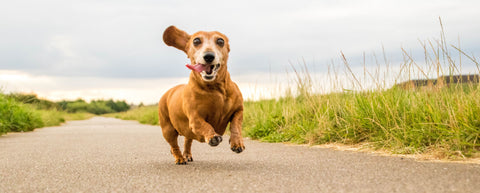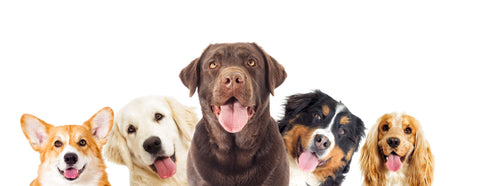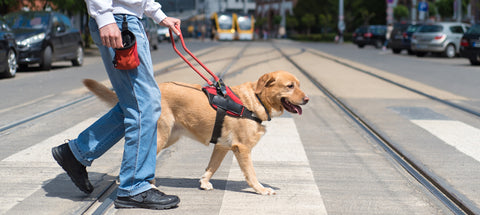Sometimes it’s hard to believe your pooch is no longer young and is classed as a senior dog. They’re still as keen as ever to go out for a walk. They still get excited at the sound of the doorbell. They still love their squeaking duck toy beyond all reason.
Occasionally though, you realise that although your dog may still be a pup at heart, time is catching up with their body. And you’ve become the proud owner of an older dog.
Is your dog older than you think?

We tend to think that a pooch becomes a senior at the age of seven. However, according to a study by the University of California, your one year old pup is already 31 in human terms! It’s important, no matter your dogs age, to get the right veterinary care throughout their life.
Science Magazine has helpfully provided this dog age calculator, which shows that a dog is likely to enter their golden years at around the age of six.
Signs of stiffness
As your dog graduates into the senior class, you might notice that they start to show signs of having stiff joints. For example:
- Your dog is sleeping more – while your dog might just fancy a nap, they could have taken to their dog bed because their joints are feeling stiff.
- Walks are taking longer – if your dog is lagging behind a bit on walks, it could be because they’re finding it harder to walk quickly and keep up like before.
- Your furry friend finds it difficult to get up after resting – stiff, ageing joints might make it harder for your dog to stand up when they’ve been lying down.
- Your pooch is reluctant to walk, jump or play – if your dog’s joints are feeling stiff, your dog might find it harder to chase after a ball or jump up for a treat.
How you can help care for a senior dog
As animal lovers, we want to do the best for our dogs and their creaky joints. So it’s likely you’re already doing sensible things like cutting down on long walks and ball-throwing sessions, and giving them a joint supplement such as YuMOVE.
But did you know that there’s also plenty that you can do in your home to make life easier for your pooch? Here’s our round-up of tips that can make a big difference for your dog.
Save your dog from slippery flooring

Wooden floors and tiles can be very slippery under a dog’s paws, especially when they’re excited about walkies and are dashing for the door. As they get older, your dog will have to work extra hard to stop themselves from slipping, as their muscles may have become weaker with age.
Use non-slip mats and trim those nails
One simple solution is to secure mats to the floor with non-slip tape so that your dog can walk without the risk of slipping and sliding. Another option is to put non-slip rubber mats in areas where your dog tends to spend a lot of their time.
It also makes sense to ensure that your dog’s nails are well-clipped and that the hair around and between their toes is trimmed. This will give them more traction as they walk across the floor. We also like the look of these non-slip dog socks, which are both super cute and practical.
No stairway to heaven (upstairs)

Climbing up and down stairs can be tough on older dogs stiff joints. So it’s a good idea to install baby gates at the bottom of your stairs to reduce the likelihood of your dog sneaking upstairs for a dog nap.

Moving up and down steps can also put more pressure on your pooch’s joints. So you can help your dog by installing a ramp to give them an easier route.
And, while we’re on the subject of making life easier for your senior dog, you could look into using a ramp to make it easier for them to get in and out of the car. Jumping in and out of the trunk really impacts on their joints.
Get a deluxe dog bed
Help your pooch to sleep sweetly at night – and during the day – with a dog bed that’s designed for older, stiffer joints.

The ideal dog bed for senior canine citizens will:
- Be large enough for them to spread out in.
- Have a chamfered (sloping) edge, making it easier to get in and out of.
- Be secure with no risk of slipping – try putting a Dycem mat underneath.
Cold and damp draughts can make things worse for stiff joints, so make sure that you put your dog’s bed in a warm place away from drafty doors, windows and a/c units.
Take dinner to a new level
Another great way to take the pressure off your dog’s stiff joints is to use a raised-height dog bowl. There are all kinds of inventive designs available online.
We also just wanted show you this:
This is Pippa enjoying her own personal pathway across the driveway at home. Due to her age and issues with her paws and joint stiffness, Fiona (from YuMOVE in the UK) and her family created Pippa, her own dedicated path out of the way of the stones!
What do you think?
We hope you find these suggestions helpful. If you have any questions about your dog’s joint health, do get in touch with our friendly customer service team. And if you have any tips to share, please let us know via Facebook or Instagram.










